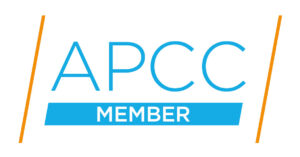Ben Mason
15 July 2022
”Implementing a Compliance Management System can be a life-changing experience for compliance teams swamped in e-mails, spreadsheets and the demands of vocal colleagues or a hi-touch Board. Nonetheless, justifying such an investment on purely financial grounds requires a considered process”.
My Compliance Centre CEO, Ben Mason, outlines how a compelling Return on Investment (ROI) business case can be constructed.
(Note: the approach outlined below can be used to evidence the case both for and against a Compliance Management System, depending on your specific circumstances.)
Compliance Management – Building the ROI
A Compliance Management System (CMS) offers many benefits. As a good starting point, consider dramatically increased control, having all your data in once place, better reporting and enjoying full transparency over the status of all compliance tasks across the business.
Regardless, some firms will require a financial assessment as part of their purchasing decision. A Return On Investment (ROI) calculation is required.
Typically, an initial ROI takes 1-2 hours to prepare (if you have a working methodology already) and can support the overall board proposal to implement a CMS.
Principles of an ROI Calculation
It’s vital that when you approach your CFO and then your Board, you do so credibly. That means being honest about the full costs of implementing and running the new system as well as identifying the costs it saves.
The ROI would normally be calculated by working out the time saved, both in the compliance function and across the business, compared to the implementation and ongoing costs of operating the CMS.
There are a few key data points you need before you start. What is the hourly cost of your compliance staff on average? And your wider staff? (A good starting point is in getting an independent reference point such as the good calculators website.) What inflation do you expect for staff costs in the coming years?
Cost Saving Calculation
From there it is a question of evaluating the processes that will save time and how much time would be saved respectively. The value of having a system with wide functionality starts becoming clear. The more processes you can save time on, the better the return. However, high volume processes, with lots of human touchpoints, are where the best returns are made. For example, the management of staff attestations generates a huge amount of administration and follow-up e-mails if done manually. Automation offers fantastic time savings. Post SMCR, attestations are used increasingly and so this is often a good starting point.
Some firms will have high volume flows of Financial Promotions or will get a greater benefit from efficiencies around automating Regulatory Change Management or the processing of File Reviews or Compliance Monitoring, for example. For many it is the time saved in writing reports. Processes like the management of Conflicts or Gifts are often lower volume but having a configurable approval process can make these much quicker to operate. It’s definitely a ‘horses for courses’ approach.
With each process, a typical approach would be to assess and break them down into the aspect of the process that can be automated (producing a cost saving) and the aspect that cannot (no cost saving). Part of this assessment includes the benefit of capturing data correctly at the point of entry. The first iteration of this exercise gives a very strong indication as to whether you are proposing the right course of action or not. It becomes obvious which processes, for your firm, are the ones which control the ROI case and you can focus on these to ensure accuracy of your analysis.
Analysing the time savings across all processes, for the compliance function and the business at large, leads to a financial saving which you can calculate as one annualised number.
There may be other cost savings such as costs of systems made redundant by the CMS.
Add all of these together and you have your cost saving.
That just leaves the much easier job of working out the costs of implementing and running the new system.
Costs of Operating a Compliance Management System
The cost analysis is easier to do and will include licence fees, and the cost of implementation.
Once you have the annualised costs and savings you can work out the ROI both in the first year (which attracts a lower ROI due to implementation costs), ongoing each year and in aggregate over – say – a 3 year period.
You now have an answer to the question “what ROI does a Compliance Management System offer my company”?
Are there any downsides to calculating the ROI?
Could it be that, as an example, the Board might start demanding staff reductions when the CMS is implemented?
We have never seen this. What is expected, is that compliance staff have more time to spend adding value because they are doing less administration. It is possible the rate of compliance staff acquisition may slow – simply because, if you spend much less time on spreadsheet administration and e-mails you may need less people.
However, that is a positive thing. Having an automated and efficient compliance function is likely to prove far more strategic and respected by the board in the long term and beneficial for all stakeholders.
For those without a CMS already, the ROI is typically high and it needs challenging for that very reason, or it may not be believed. It always makes sense to work through an ROI analysis with a trusted internal and independent party, like your CFO, before taking it to the Board.












